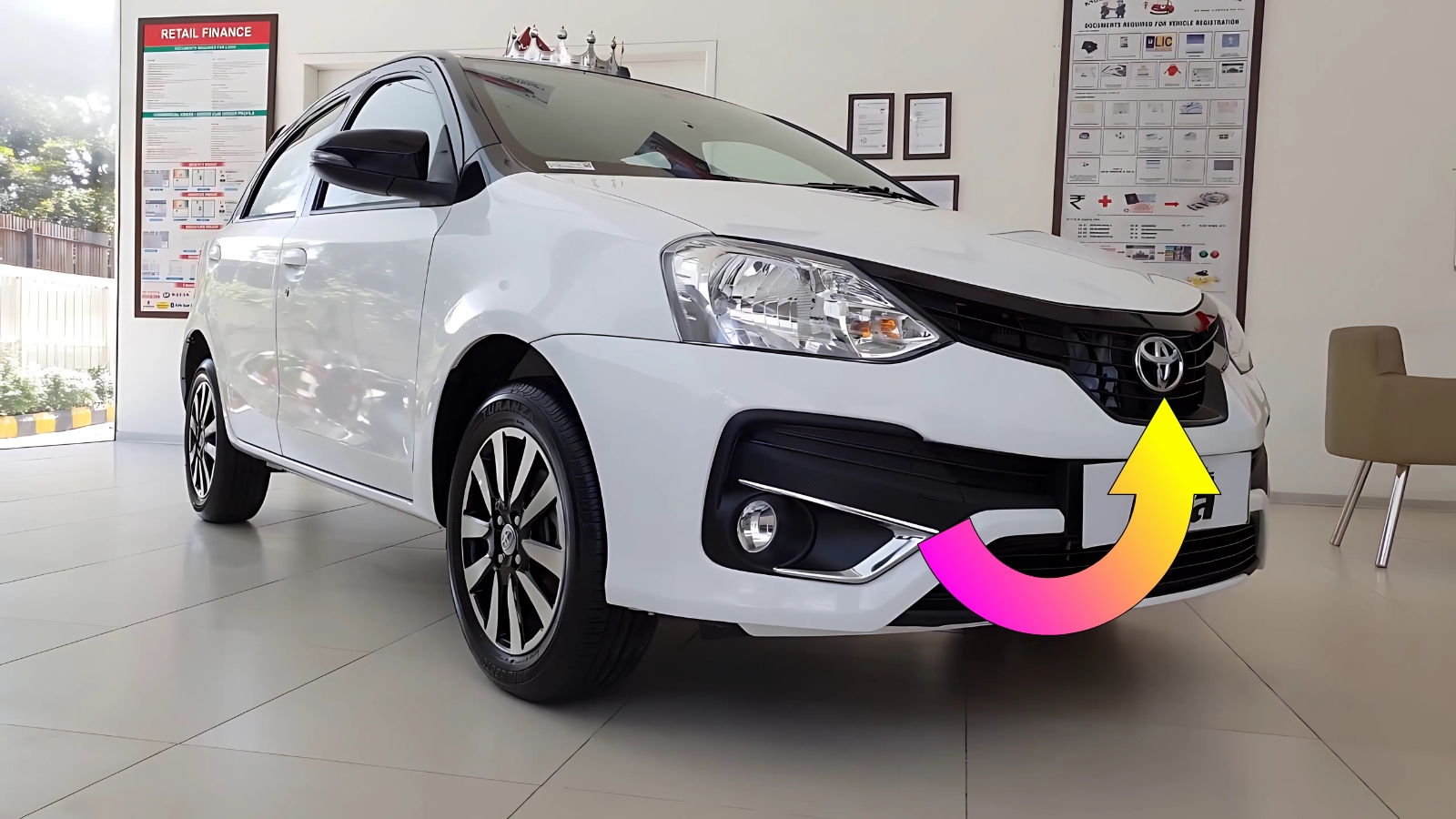Toyota Etios Liva : Toyota’s decision to resurrect the Etios Liva nameplate caught industry watchers off guard yesterday morning when the Japanese automaker revealed plans for a completely reimagined version of their once-popular hatchback. The announcement, made at Toyota’s Bidadi plant near Bangalore, signals a strategic shift towards recapturing market share in India’s fiercely competitive budget hatchback segment. Company executives expressed confidence that lessons learned from the original model’s lifecycle have shaped this bold reinvention.
Transformation Beyond Recognition
The new Etios Liva bears little resemblance to its utilitarian predecessor. Toyota’s design team, working collaboratively between Japan and India, created a vehicle that challenges perceptions about budget car aesthetics. The front fascia features a striking hexagonal grille with chrome accents that flow seamlessly into swept-back headlamps incorporating LED daytime running lights—features typically reserved for higher segments.
The side profile showcases a rising shoulder line that creates visual dynamism while maintaining practical rear-seat headroom. Designers achieved this through clever roof contouring and strategic pillar placement. The floating roof effect, achieved through blacked-out C-pillars, adds contemporary flair without increasing manufacturing complexity significantly. Sixteen-inch alloy wheels on higher variants fill the wheel arches properly, eliminating the awkward gap that plagued the original model.
Interior Quality Exceeds Segment Expectations
Stepping inside reveals Toyota’s most dramatic departure from the previous generation. Gone are the hard plastics and sparse equipment levels that defined budget motoring. The dashboard features soft-touch materials on frequently contacted surfaces, while a piano black center console houses an eight-inch touchscreen infotainment system compatible with Android Auto and Apple CarPlay.
The instrument cluster combines analog dials with a color multi-information display, providing essential information without overwhelming drivers. Seat fabrics use durable yet attractive materials that resist wear while maintaining comfort during extended journeys. Rear passengers benefit from improved knee room achieved through redesigned front seatbacks, addressing a common complaint about the original model. Storage spaces throughout the cabin show thoughtful consideration for Indian family needs, including dedicated spots for smartphones, water bottles, and small bags.
Mechanical Updates Focus on Efficiency
Under the hood, Toyota introduces updated versions of proven powertrains optimized for fuel efficiency and reduced emissions. The 1.2-liter petrol engine now produces 83 horsepower while achieving claimed fuel economy of 22 kilometers per liter through improved combustion technology and reduced internal friction. The motor feels peppy in city conditions while maintaining refinement levels that surpass segment standards.

For buyers prioritizing running costs, Toyota offers a factory-fitted CNG option delivering approximately 30 kilometers per kilogram. The integration happens at the manufacturing stage rather than through aftermarket conversion, ensuring warranty coverage and optimal performance. Both manual and automated manual transmission options cater to varying buyer preferences, with the AMT unit receiving calibration specifically for Indian traffic conditions.
Safety Features Set New Benchmarks
Toyota’s commitment to democratizing safety technology shines through the Etios Liva’s equipment list. Dual front airbags, ABS with EBD, and rear parking sensors come standard across all variants—a significant statement in a segment where manufacturers often compromise safety for pricing. Higher variants add side airbags, hill hold assist, and electronic stability control, features virtually unheard of at this price point.
The body structure utilizes high-strength steel in critical areas, improving crash protection without substantially increasing weight. Toyota’s GOA (Global Outstanding Assessment) body construction philosophy ensures consistent safety standards regardless of market or price positioning. ISOFIX child seat anchors and three-point seatbelts for all passengers demonstrate attention to family safety requirements.
Pricing Strategy Disrupts Market Dynamics
The masterstroke lies in Toyota’s aggressive pricing strategy. Starting at ₹5.99 lakhs for the base petrol variant, the Etios Liva undercuts several established competitors while offering superior features. The top-spec automatic variant, priced at ₹8.49 lakhs, includes equipment levels matching vehicles costing significantly more. This pricing reflects Toyota’s manufacturing efficiency improvements and strategic decision to accept lower margins initially to rebuild market presence.
Toyota Kirloskar Motor’s managing director explained during the launch that the company views this as a long-term investment in the Indian market. The strategy involves attracting first-time car buyers who might later upgrade within the Toyota family, creating brand loyalty from entry level upwards.
Yamaha RX 100 will be relaunch soon for remind the day’s of nani
Toyota Etios Liva Market Response and Future Implications
Initial dealer feedback suggests strong consumer interest, particularly from tier-2 and tier-3 cities where value consciousness drives purchase decisions. Pre-launch booking numbers reportedly exceeded company projections, indicating pent-up demand for affordable yet feature-rich vehicles. Young professionals and small families form the primary target demographic, attracted by the combination of Toyota reliability and unexpected premium features.
The Etios Liva’s return could trigger competitive responses from established players like Maruti Suzuki and Hyundai. If successful, this approach might encourage other manufacturers to revisit discontinued nameplates with comprehensive updates rather than developing entirely new models. The Indian automotive market, already intensely competitive, stands to benefit from this renewed focus on delivering premium experiences at affordable prices. Toyota’s bold gamble demonstrates that budget segments need not mean compromised experiences, potentially reshaping buyer expectations across price categories.
